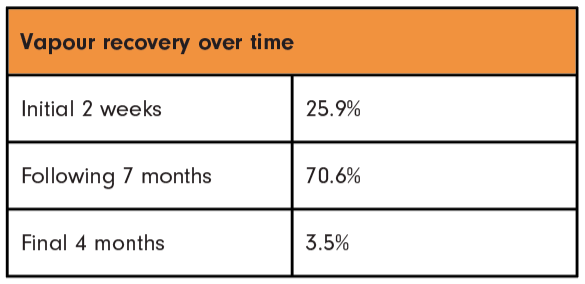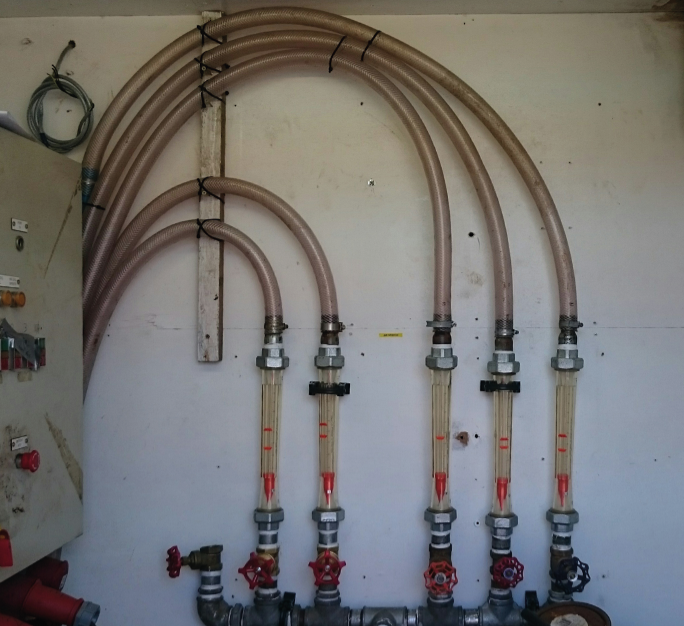Air Sparge Vacuum Extraction
Background
Intrusive investigations at a petrol filling station (PFS) site in Greater Manchester identified gross hydrocarbon contamination in shallow subsurface and groundwater, predominantly located in three distinct areas of the eastern side of the site.
Phase-separated hydrocarbons were identified in one borehole, with enhanced fluid recovery (EFR) using a vacuum tanker utilised in order to initially remove the gross contamination.
A supplementary delineation investigation and QRA led to a recommendation of remediation using Air Sparging and Vacuum Extraction (AS-VE) techniques to mitigate identified hazards associated with gross shallow hydrocarbon contamination. The remediation works were undertaken in tandem with planned redevelopment of the PFS forecourt and tank farm, with the AS-VE system remaining in place for a period of 12 months while the PFS remained operational.
Summary of Remediation Activities
Prior to the delineation investigation and installation of the AS-VE plant, one vacuum uplift using EFR techniques was undertaken from the on-site wells via vacuum tanker to remove accumulated fuel for off-site disposal. No phase-separated fuel (NAPL) was detected in any location across the site following completion of these works over the following two years of monitoring.
An AS-VE treatment system was subsequently installed at the site and applied a vacuum to the unsaturated zone and used a compressor to bubble air through the water column via wells in the hydrocarbon-impacted area of the site.
This remediation process achieved two objectives:
- Volatise dissolved hydrocarbons in the water column from the aqueous phase to be recovered under vacuum; and
- Remove hydrocarbon-saturated vapour and improve conditions for aerobic biodegradation of residual impact in the soils and groundwater.
The treatment system operated for a 12-month period. Air monitoring points installed inside the system container allowed for continuing observations of treatment progress and the calculation of recovered hydrocarbons. Monthly monitoring recorded groundwater levels and any potential phase-separated fuel.
The AS-VE remediation system was operated with minimal risk of harm or nuisance to site users, neighbouring residents and the public, through vapour and noise monitoring.
After the 12-month operational phase, the AS-VE system shut down to allow validation sampling and monitoring over a period of 3 months.
.jpg?width=2000&height=901&name=western%20tank%20farm%20280515%20(5).jpg)
Groundwater Results
Contaminant concentrations post AS-VE remediation were compared against concentrations that had been recorded pre-treatment and the site-specific target levels (SSTLs) generated in Geo2’s QRA.
Of the six monitoring wells located across the AS-VE treatment area of the site, lab testing of groundwater samples recorded marginal elevated concentrations of hydrocarbons above SSTLs at one location only.

Vapour Results
The ongoing monitoring of the AS-VE treatment system during the remediation works recorded an initial high degree of recovery, rapidly falling to a steady rate over the following months (see table). During the final four months of the AS-VE treatment system operating, the rate of recovery fell significantly indicating that removal of available hydrocarbon contamination in the subsurface had been largely achieved.

Review of Remediation Works
The aim of the Air Sparging and Vacuum Extraction remediation programme was to reduce levels of residual hydrocarbon contamination in the subsurface to ‘as low as reasonably practicable’ concentrations and asymptotic conditions, as agreed with regulators. The works were successfully delivered within the existing build framework, undertaken alongside redevelopment of the site and the continued operation of the petrol filling station over a period of 12 months.
The pattern of fuel recovery was indicative of an initial ‘pulse’ of air saturated with volatile hydrocarbon contamination being flushed out of the soil pore space. Recovery rates then reduced as clean air was pulled in from around the impacted area and contamination was limited only to hydrocarbons newly volatilised.
Given that reductions of hydrocarbon concentrations in shallow groundwater in the region of 90% have been observed, it can be demonstrated that remedial works have been successful. Vapour monitoring results indicated that further significant reductions were unlikely.

